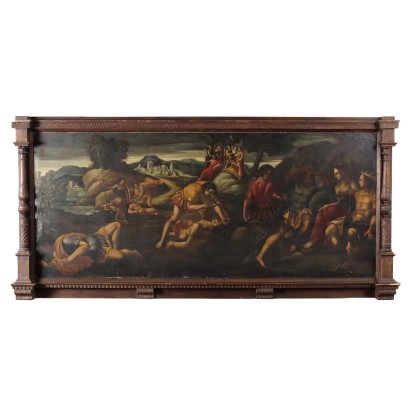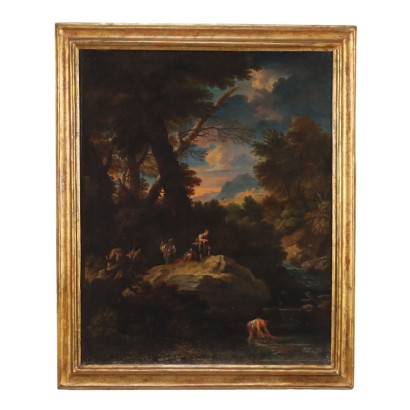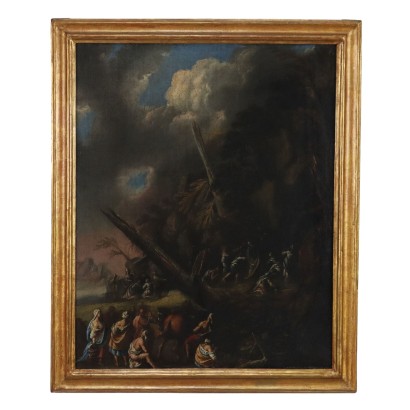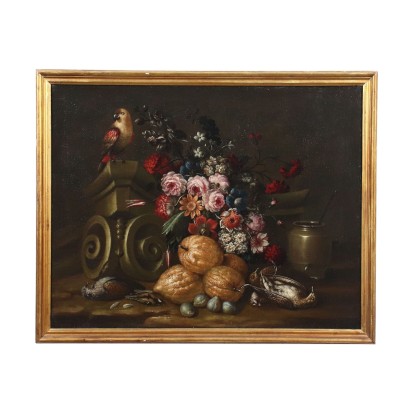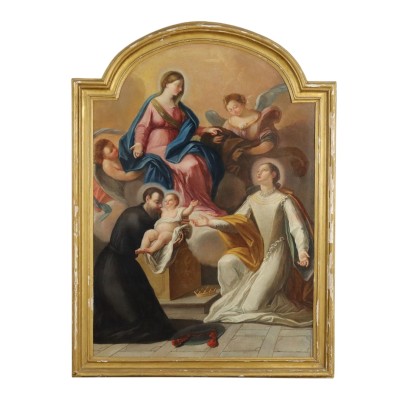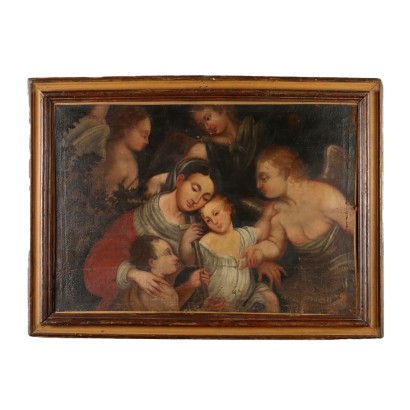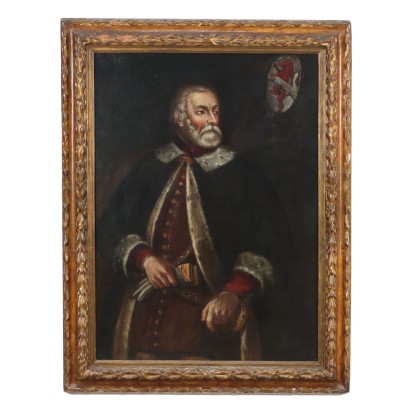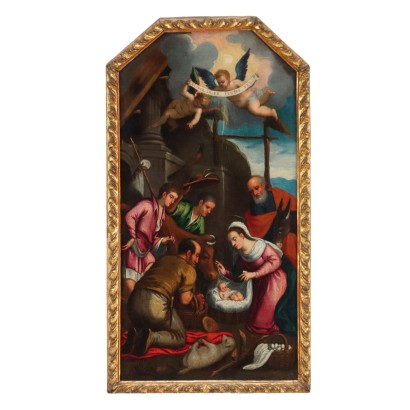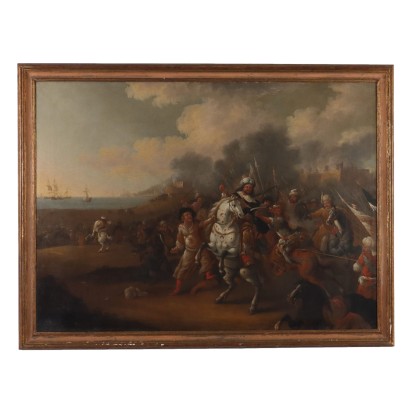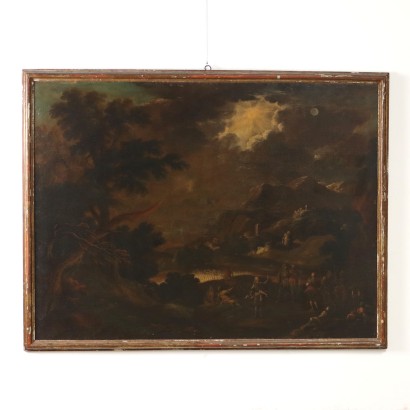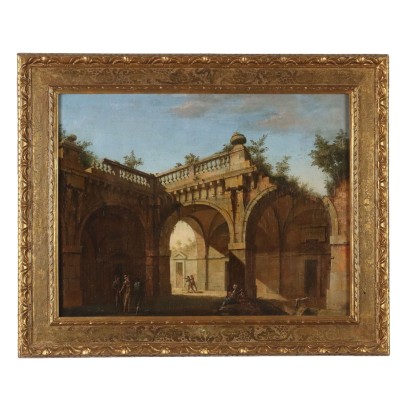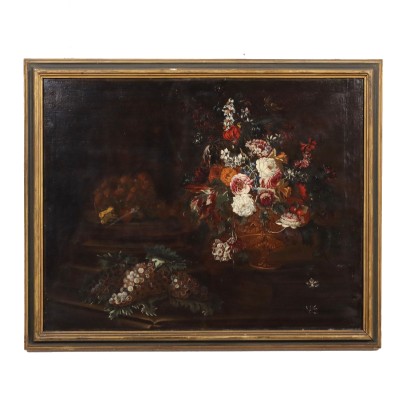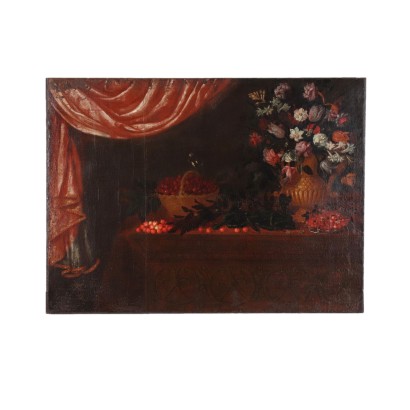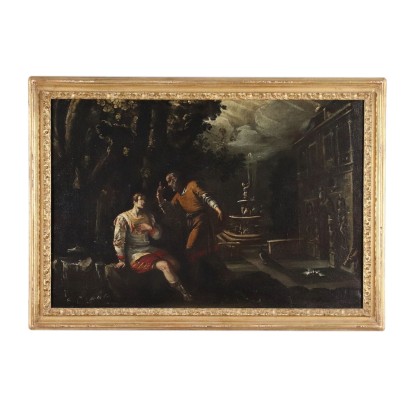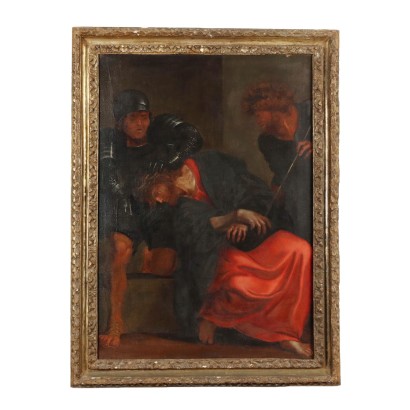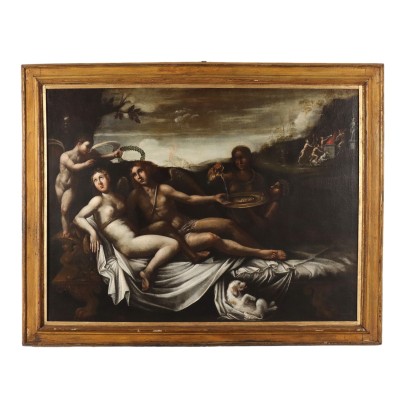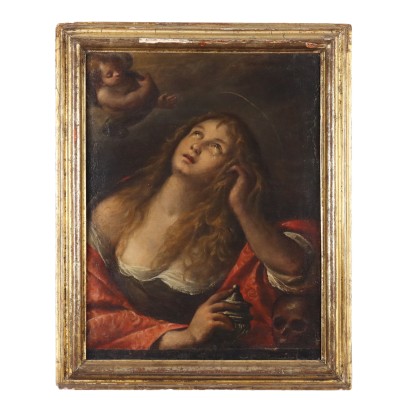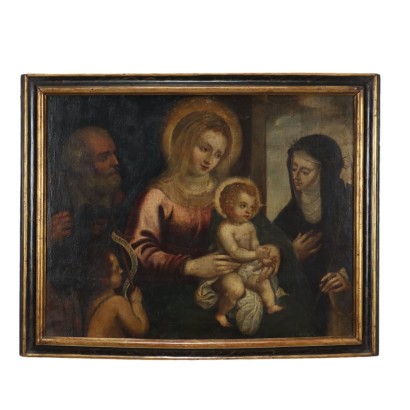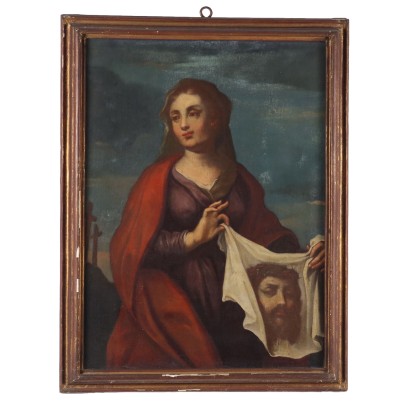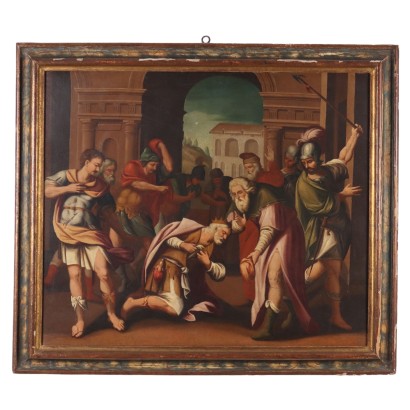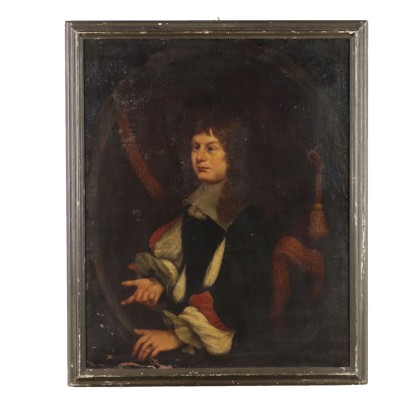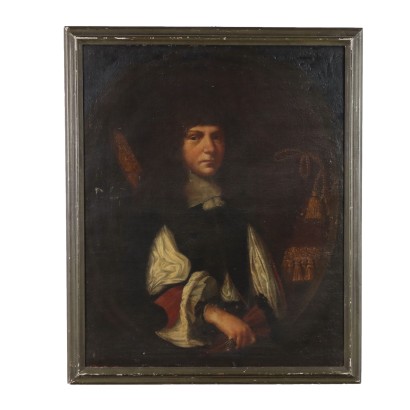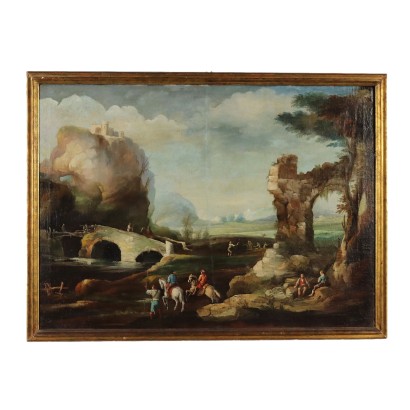Mythological Subject Oil on Canvas Italy XVII Century - The Tale of Apollo and Marsyas
Features
The Tale of Apollo and Marsyas
Artwork title: La favola di Apollo e Marsia
Artistic school: North Italy School
Age: 17th Century / 1601 - 1700
Subject: Allegorical/Mythological Subject
Origin: Italy
Artistic technique: Painting
Technical specification: Oil on Canvas
Description : La favola di Apollo e Marsia
Oil painting on canvas. Northern Italian school of the seventeenth century. The large canvas derives from an engraving of 1562 by the Venetian Giulio Sanuto, who faithfully reproduced the homonymous work by Bronzino (1503-1572), currently preserved in the Hermitage; compared to the original, the engraving added the group of Muses and modified the landscape background by introducing views of the villages. The work is divided into four scenes, which must be read from right to left. The first scene depicts the musical contest between Apollo and the Silenus Marsyas, who played the flute so well that he was considered superior to the same god; the two contenders are performing, the god with the lyre and the silenus with the flute even upside down (to increase the difficulty of the undertaking), in front of King Midas and the goddess Minerva, recognizable by her attributes, the helmet, the spear and the shield. In the second scene Apollo is intent on skinning Marsyas, to punish him for having won the musical contest; lean on the ground next to him, his cloak and lyre. In the third scene, it is King Midas who is punished by the god for having preferred Marsyas to him: Apollo is putting the donkey's ears on Midas, while Minerva is watching. Finally, the fourth scene, in the foreground on the left, is characterized by a particular figure, identified in the faithful servant and barber of the king: since Midas had ordered him to keep the secret on his donkey ears, not being able to let off steam otherwise, he dug a hole in the ground and yelled into there his secret; in that place, however, legend has it that a bush of reeds grew that with the wind whispered "King midas has donkey ears", thus revealing the dreaded secret. The painting has been previously restored and relined, but currently needs any further color recovery. On the back in pencil there is an old attribution to the Ferrara school ("Ercole da Ferrara"). It is presented in a late 19th century style frame.
Product Condition:
Product in fair condition showing some signs of wear.
Frame Size (cm):
Height: 130
Width: 268
Depth: 13
Artwork dimensions (cm):
Height: 105
Width: 243
Additional Information
Artistic school: North Italy School
Age: 17th Century / 1601 - 1700
17th Century / 1601 - 1700Subject: Allegorical/Mythological Subject
Artistic technique: Painting
La pittura è l'arte che consiste nell'applicare dei pigmenti a un supporto come la carta, la tela, la seta, la ceramica, il legno, il vetro o un muro. Essendo i pigmenti essenzialmente solidi, è necessario utilizzare un legante, che li porti a uno stadio liquido, più fluido o più denso, e un collante, che permetta l'adesione duratura al supporto. Chi dipinge è detto pittore o pittrice. Il risultato è un'immagine che, a seconda delle intenzioni dell'autore, esprime la sua percezione del mondo o una libera associazione di forme o un qualsiasi altro significato, a seconda della sua creatività, del suo gusto estetico e di quello della società di cui fa parte.Technical specification: Oil on Canvas
The oil painting is a painting technique using powder pigments mixed with bases in inert and oils.Other customers have searched:
Se sei un appassionato d'arte, non perderti i nostri approfondimenti sul Blog Arte Di Mano in Mano e su FineArt by Di Mano in Mano - Arte:
Leggi di più
Ecco alcuni tra i principali articoli:Vedute
Falsi nell'arte antica
Un messaggio di fiducia per ripartire
La potenza espressiva dell'arte figurativa etiope
Breve Storia del Collezionismo
Giorgio Upiglio, maestro dei libri d'artista
Matthias Withoos detto "Calzetta bianca"
San Rocco pensaci tu - Classic Monday
Dai un'occhiata alle nostre rubriche di divulgazione sull'arte:
Epoche
Lavorazioni e tecniche
Mostre ed Eventi
Protagonisti
Se sei appassionato di pittura antica, con tutta probabilità gusterai le schede di questi stupendi quadri:
"Dio parla a Noè dopo il diluvio", Jacopo da Ponte, detto il Bassano, seconda metà XVI secolo
Crocifissione, maestro della misericordia dell'accademia, terzo quarto del XIV secolo
Erminia incontra i pastori, Camillo Gavassetti, Seconda metà anni Venti del XVII Secolo
Eroine dell'antichità, Francesco Conti, XVIII secolo
Hieronymus III Francken, La Negazione di Pietro, XVII secolo
Jefte e la figlia, Girolamo Forabosco e aiuti, XVII secolo
L'Accademia di Platone, piccolo arazzo, fine XVII - inizio XVIII secolo
Maddalena e San Giovanni Battista
Natura Morta, Bartolomeo Arbotori, XVIII secolo
Sacra Famiglia con San Giovannino, Bartolomeo Ramenghi, scuola di, prima metà XVI secolo
Testa Femminile, Andrea del Sarto, ambito di, post 1522
Uva, fichi, melagrana e pesche su un capitello - Maximilian Pfeiler, primo quarto XVIII secolo
Sapevi che l'arte può essere anche un ottimo investimento (e non solo per grandi portafogli)?
L'Arte tra Collezionismo e Investimento
FineArt: Arte come investimento
Product availability
The product can be seen at Cambiago
Immediate availability
Ready for delivery within 2 working days from ordering the product.

